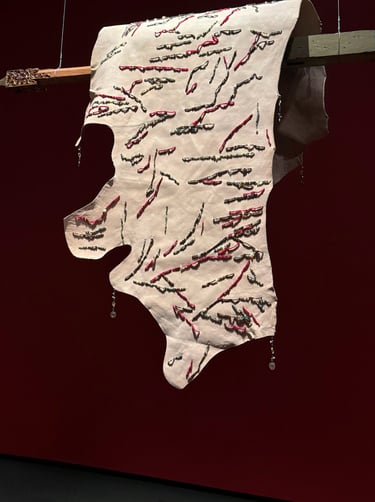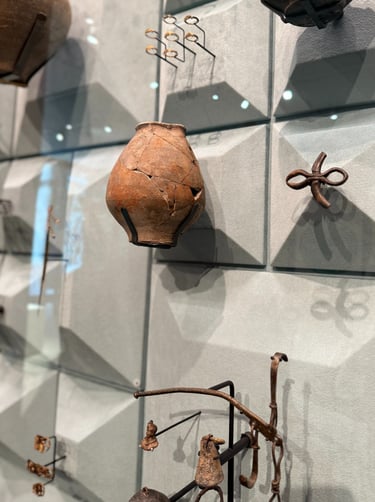Nature and Environment
I do not depict landscapes. It sits closer to a study of small environmental actions. Gravity, evaporation and settling become collaborators. Pigment is used as a slow fade rather than as a graphic sign. Sand is sifted to migrate into lines that read like silt after a tide. The presentation is gentle. The contrast is low. Light is used as another material that moves as the viewer moves. These decisions allow thoughts about climate and care to enter without instruction. As Gavin noted, the installation allows the climate crisis to be felt through the quiet fact of fragility rather than through a slogan.


A beach visit to Rye made this clear. At low tide the wet sand held crisp channels, soft ridges and sudden sinks. In the studio I tested shallow ceramic reliefs that echo this register. Earlier work staged environmental elements through broad zones of colour. That impulse is quieter here. A sift of sand travels inside a pour and settles into lines that carry the subject through behaviour rather than depiction. A faint pigment drift becomes a tide mark. The environment arrives as action in matter.
Site visits shaped this reading. At London Mithraeum, fragments and small artefacts are presented so that the ground operates as knowledge. The broken pot that still holds its curve teaches how residue can carry time. That logic supports my choice to keep shards and to place them where a line can continue across absence. At the Barbican Curve, Citra Sasmita’s installation combined textile, hide and architectural rhythm to build a world that is read through spacing and repetition rather than through a single image. The beaded surfaces hung in relation to pillars made a passage that the body had to measure. This reinforced my belief that arrangement and pace can hold environmental thought without illustration.
Several writers help place this position. Tanya Kovats describes drawing with water as a register of change that can be read over time rather than a picture of flow (Kovats 2014). Tim Ingold’s account of line and making supports the idea that materials do not only receive form, they also disclose processes through their own behaviour (Ingold 2007). Jane Bennett’s writing on vibrant matters helps me keep attention on small effects and shared agencies rather than on a heroic image of nature (Bennett 2010). These texts do not supply a theme; they clarify why a seam, a slight pit, or a shift from dry to faintly pooled can carry environmental thought.
Cited in this section
Kovats 2014; Ingold 2007; Bennett 2010; installation contexts noted from London Mithraeum and Barbican Curve.


monayadav.com